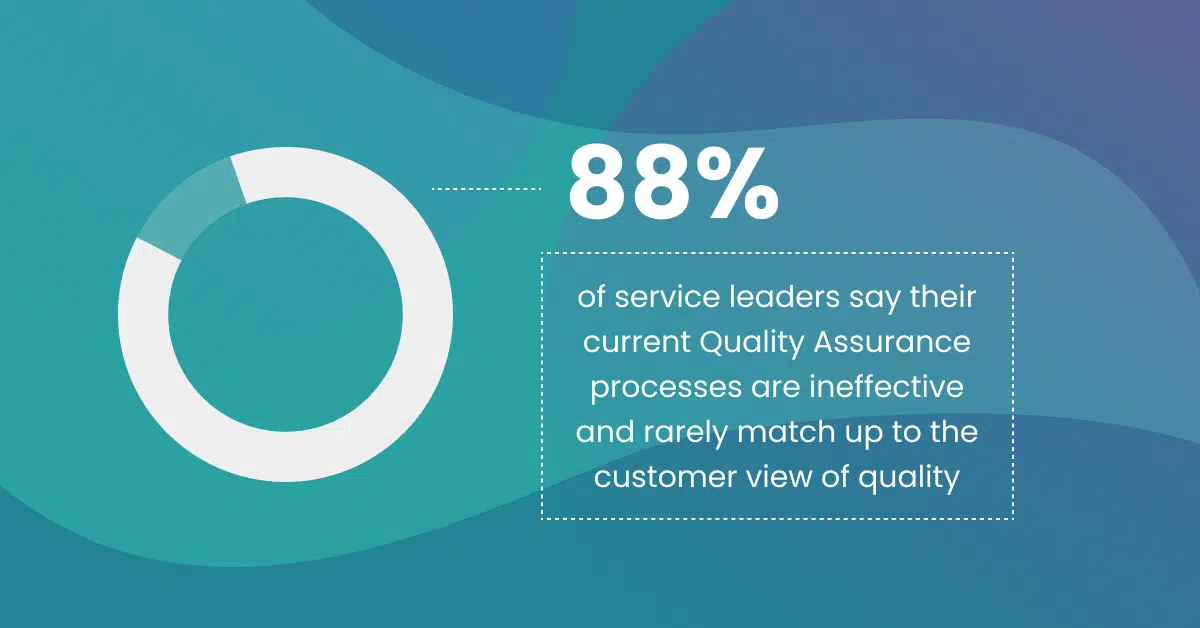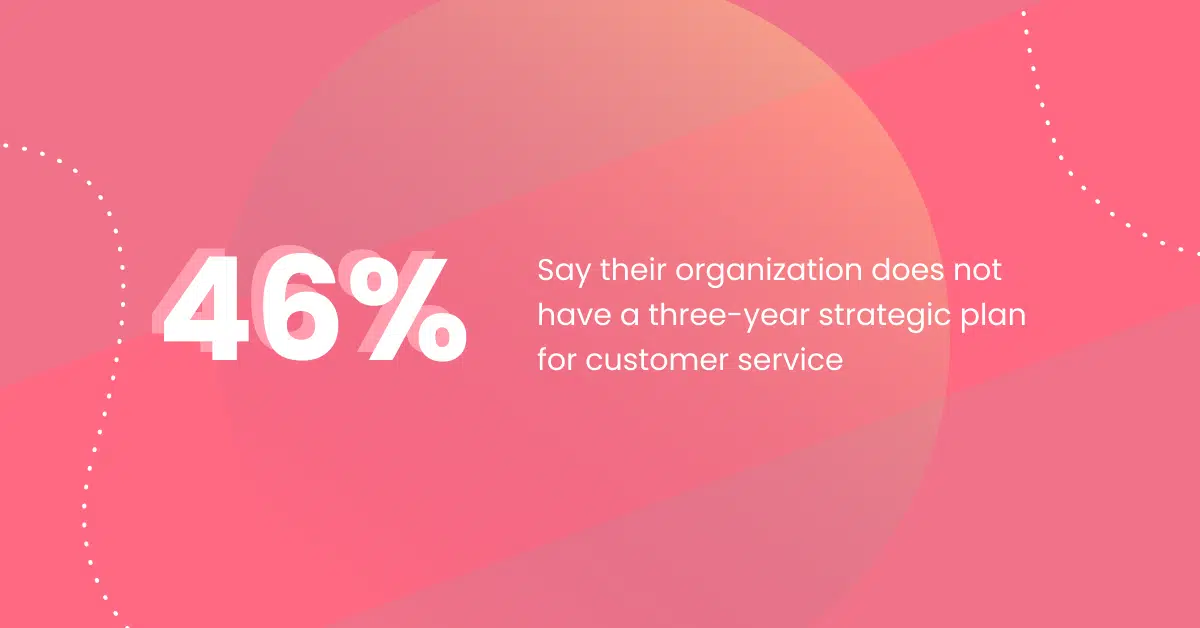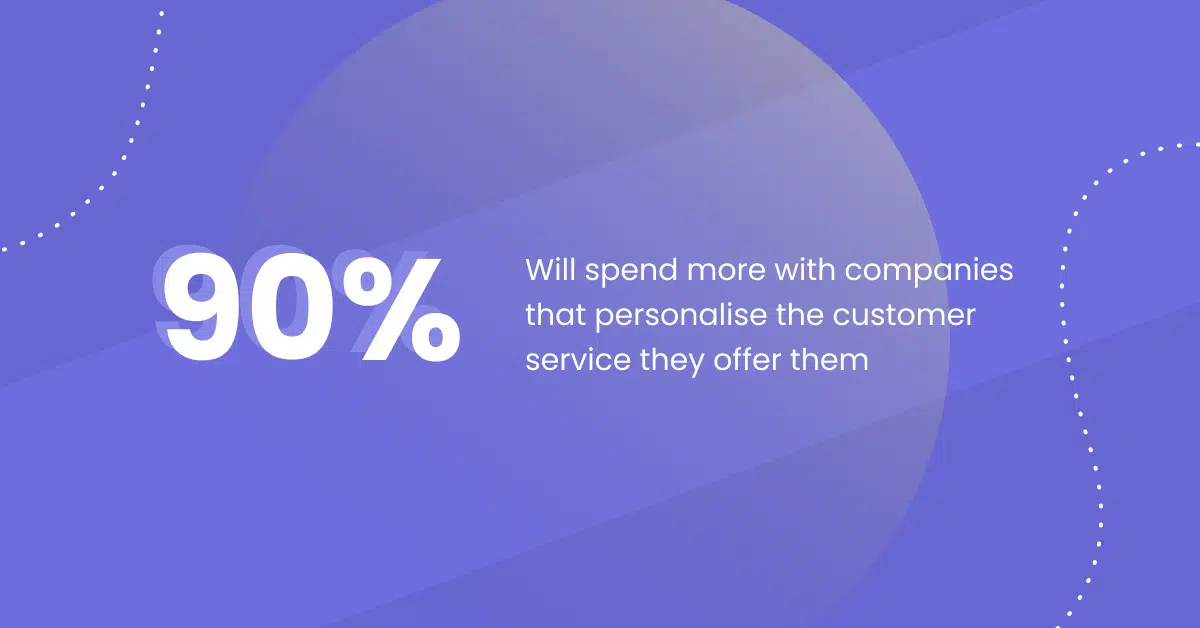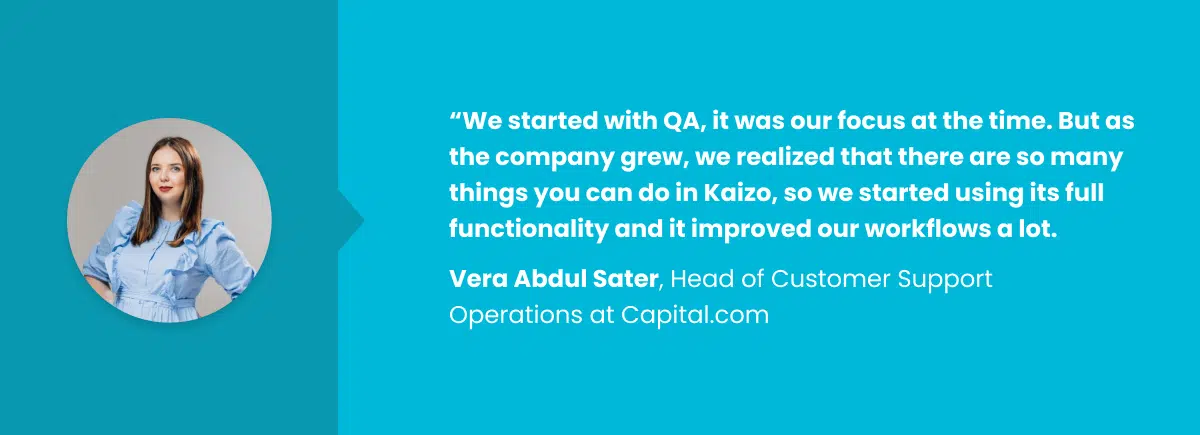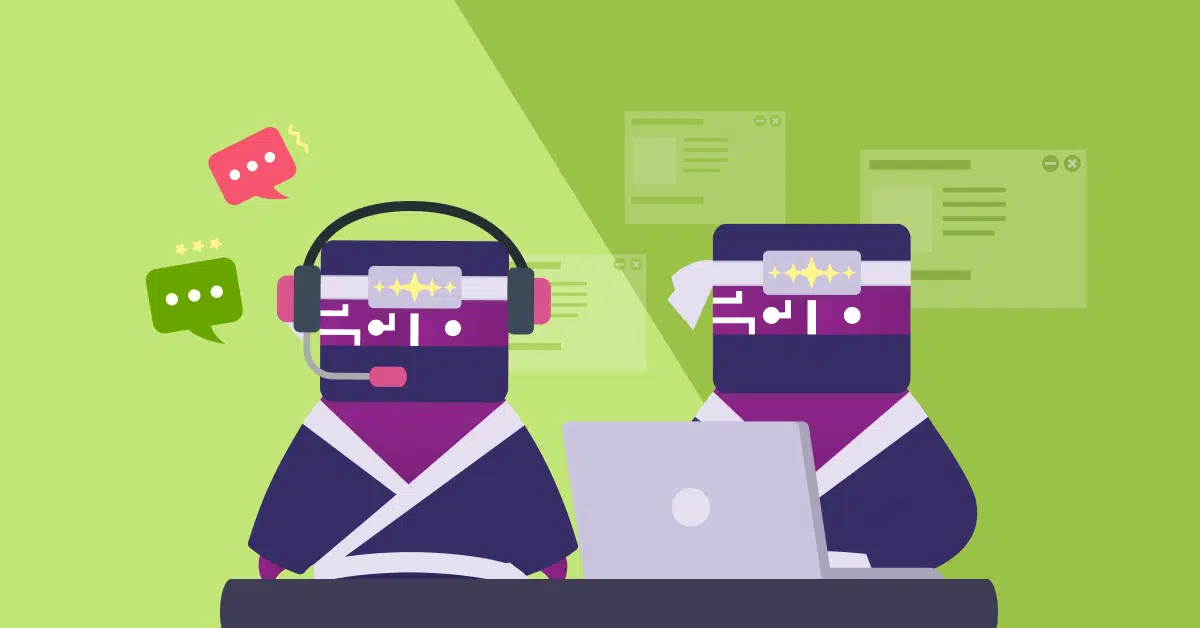Speak to any customer support professional and they’ll agree – quality assurance (QA) is incredibly important.
The past few years have been exceptional, to say the least. In 2023, the incredible spike in digital experiences has led to a huge transformation in how customer service is provided.
Unfortunately, that also creates a more competitive market for new and shiny ways to delight customers. As a result, providing high-quality customer support is now more important than ever to give companies a competitive advantage.
So, if the pressure is on, why aren’t more departments modernizing their QA processes to match demands in 2023?
What does quality assurance look like in 2023?
Customer service researcher, Shep Hyken, reported that 49% of customers had more bad customer service experiences in the past year compared to the year before. As a result, 61% of customers are raising their standards for what “quality service” looks like.
These are all clear signs that businesses need to rethink the way they monitor their quality of service interactions in 2023. But don’t just take it from us — see what service professionals think about it.
Gartner goes on to report that despite budget constraints, QA specialists are making a strategic move towards measuring quality rather than productivity, as they had in the years before.
So what does that mean for your QA practices this year? How do we define quality and how can customer service teams adapt to the changing tide?
Why is quality assurance always the first to go?
Winging it is not going to cut it anymore. Your agents are skilled, your products impress, and your company is generally successful. But is that growth intentional? Was this a plan or a trick of the moment?
Nearly half of the companies have not documented a 3-year strategic plan for customer service. Even so, reviewing service data does not seem to be a priority for most. Only 20 % reported viewing their service metrics daily while 40% only review data once a month or less.
So why aren’t companies thinking strategically about their success? Why has evaluating service interactions – doing QA – been pushed to the side
- Leads assume quality service comes naturally
- Companies are hesitant to hire dedicated QA experts or fund QA training
- Call centers aren’t using optimized QA tools
- If they have a QA tool, it’s not integrated with the software agents use to complete tickets
- Their quality assurance processes can’t meet needs for growing teams
4 steps for effective quality assurance in 2023
This article will provide a 4-step guide to upgrading your QA tools and processes for 2023. Follow this advice and see your QA ratings skyrocket!
Quality assurance is not only about rating performance. QA Specialists are to lead agents through these trenches. They guide agents through the ins and outs of delivering service with data-driven recommendations for the customer, efficient time, accurate information, and an empathetic tone.
Step 1: Modernize your QA Templates
First, you need to know better, to do better.
Traditional QA criteria only include productivity metrics and other easily measurable results. However, QA in 2023 needs to include qualitative criteria. This means QA experts need to be on the lookout for interactions that lack empathy or come across as “too robotic.”
Catch up on your customer’s changing mindset and start customizing QA templates.
Not sure where to start? Keep reading or download our QA Template ebook!
Download now: 10 Unique Quality Assurance Templates
Reward attentive and empathic customer care
You know the old ways of monitoring performance are over — but what takes its place?
Customers want to feel comforted and get satisfactory answers. And really, after the unpredictability of the past few years, who wouldn’t?
In 2023, quality comes before quantity. It will be your QA expert’s job to identify what empathy looks like in customer interactions and reward the agents who do it well.
A great way to be empathic and attentive is to remember little details about your customer and ask the right questions to avoid potential problems in the future. That’s what 90% of customers mean when they want personalized support – the kind of help and attention they receive from a friend.
Prioritize product and policy knowledge
Service agents, whether in-house or outsourced, are the face of your entire business. As we discussed earlier, customers want their support heroes to be friends who can fix anything!
|
46% of all consumers will abandon a brand if the employees are not knowledgeable. (Forbes Insights) |
If you want to retain customers, focus on building companies to encourage and support agents as they learn their company’s knowledge base. Doing QA is not only about rating tickets, QA leads are often working alongside other managers to ensure that quality actually improves.
Creating a company knowledge base not only improves quality but can help empower customers as well! Use that knowledge for self-service channels.
Step 2: Automate so you can ditch those worksheets
Now that you’ve set up your custom QA criteria, time to build a process for quality assurance. A Quality Assurance Checklist will do the trick in this situation.
Now, manual spreadsheets and Google forms may be cost-effective for smaller teams to do QA.
The thing is, at the end of the day spreadsheets can hinder the effectiveness of your QA process. Spreadsheets make quality assurance:
- Increase the likelihood of data errors
- Operationally inefficient and time-consuming
- Insecure form of data collection
- Hinder development with lagging data
In 2023, the risks of un-automated customer service QA just don’t outweigh the dollars saved. Customers want to feel safe, they want to know that the companies they invest in use protected technology. For any team looking to improve their service quality with minimal effort as their team scales, shifting towards a CRM-integrated QA tool is a no-brainer..
Operational efficiency
The average QA lead can spend up to 5 hours manually extracting, analyzing, and reporting on customer conversations. Half a day, every day spent with their focus on the computer rather than supporting their agents, as they’d prefer.
“I used to spend 3-4 hours per day on creating a QA spreadsheet for each agent each week…not to mention organizing weekly quality reports”
Rohit Salian, Team Lead & QA Expert at Truecaller
.
With QA software all of these laborious tasks are done for you. This gives you more time to focus on what’s important. One of our users, Capital.com, found that Kaizo became a platform that optimized even unexpected processes in their call center.
Adopting an integrated QA software can boost your operational efficiency by:
- Saving you hours per day on data entry and searching for interactions to review
- Negating the need for report building with real-time quality scores readily available in one transparent place
- Never having to leave your CRM to review conversations .
“With my current QA tool [Kaizo], what used to take me 3 hours in reporting takes me 30 minutes”
Rohit Salian, Team Lead & QA Expert at Truecaller
.
This way QA leads can spend their time on improving internal processes, developing new strategies, and coaching agents to provide better quality conversations with customers. .
Real-time vs deferred data
Having manual spreadsheets doesn’t optimize data collection. That means the insights you collect are lagging. When your systems are behind, Team Leads could be directing agents and building schedules based on weeks-old data. That’s the quickest way to have scheduling issues in your call center.
Manual quality assurance processes are also extremely time-consuming. This often means that by the time it comes around to reporting/coaching on these numbers, processes may have changed or a quality issue may have been repeated by agents.
“With spreadsheets, we had bi-weekly QA cycles. 1 week to build reports on the previous 2 weeks data, the next for feedback. This lengthy process meant we were always one step behind and often reviewing processes that had already changed”
Filip Telinoiu– QA Lead at Tripaneer .
With integrated software, your data is in real-time and all in one place. This gives you one organized, holistic view of your QA process.
It also makes it easy to pinpoint problem areas in your conversations or processes and adjust or coach on them immediately rather than waiting until a larger issue occurs.
“Now [with Kaizo] our QA cycle is twice as efficient and has been cut down to one week meaning no more data-entry!”
Filip Tiuliuoa– QA Lead at Tripaneer
Step 3: Integrate, Integrate, Integrate
Now that you’ve ditched your spreadsheets for a QA tool you’re probably thinking, ‘How do I know which one to choose for my team?”
The answer is simple. One that is completely integrated with your CRM.
Whilst there are a lot of QA tools available, a lot of them are stand-alone. This means that they are separate from your CRM and are not directly linked with your incoming tickets.
For any team looking to make quality assurance a vital part of their performance assessment process, shifting towards a CRM-integrated QA tool is the first step.
Everything in one place
One of the biggest benefits of having an integrated quality assurance tool is that your entire QA process occurs in one place.
This means no more shifting between different browser tabs or copying and pasting data. All of your tickets, review conversations, and quality scores are available and updated in real-time within your CRM.
“Having Kaizo integrated with Zendesk has eliminated the need for cross-referencing. It saves me hours and leaves absolutely no chance for error when reporting”
Sophia Spagnuolo – Quality Assurance Lead at Fetch Package
With QA integration nothing leaves your insular CRM, meaning that there is no time wasted switching between tools and no chance of human error.
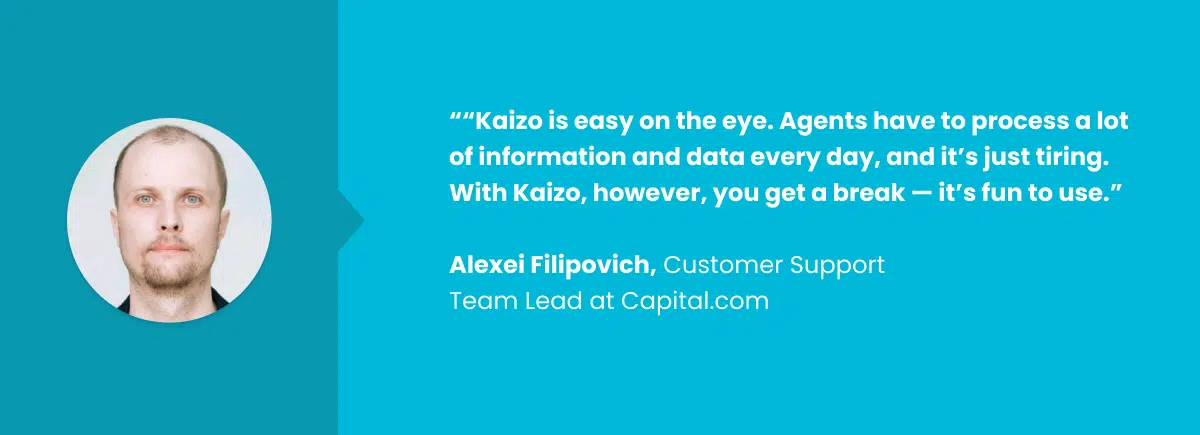
Step 4: Have QA that’s scalable, strategic, and sustainable
Being strategic about QA may just be the backbone process that protects your CSAT in challenging times. Strategic planning for sustainable outcomes. This should be a strategy for every business in 2023.
Giving numbers meaning
The primary aim of performing QA in customer service is to have a system for regularly monitoring customer interactions. But QA is much more than calculating numbers. High-performing QA Leads take their insights and share them with agents. Quality assurance processes are what keep your workforce sharp and motivated.
Making QA and healthy feedback sessions a part of your everyday work culture will pay off. When your software has integrated QA you are able to drill into these scores to review exactly which interactions contributed to this score.
“With Kaizo 1:1’s are much more efficient. Rather than telling an agent what quality score they got this week, I can simply click the score on their Scorecard and instantly see which reviews lead to them achieving this number”
Sophia Spagnuolo – Quality Assurance Lead at Fetch Package
.
This gives quality coaching sessions more meaning and efficiency and a clear, up-to-date, and integrated tech make that possible.
User-friendly software can strengthen teams
Agents are masters of multitasking. But that doesn’t mean this job doesn’t take a toll. Burnout, empathy fatigue and visual strain are hurting our agents and overly complicated software isn’t helping.
Some customer service performance software allows agents to review their own performance data. But too many interfaces are crowded, overwhelming, and only highlight negative results.
Scalable software is transparent
So you’ve ditched your spreadsheets and you’ve integrated your QA tool with your CRM. But how do you make sure that your team continues to do QA even when your business scales? How are you ensuring your QA processes are flexible enough to meet the ever-changing demands?
Typically, QA is a top-down activity, run solely by the management team. Often they’re the only ones who can review performance and agents don’t see their quality scores until their report or 1:1 at the end of the week.
In 2023, call centers need to be an empowering workplace for customer service agents. Agents need a way to dispute ratings or give context to past interactions. But now, they rarely have a say in what is fair or unfair. Often agents are merely presented with a score that they’ve never seen. Agents aren’t traditionally granted access to review their own performance history.
.
This lack of transparency can be very demotivating for agents. This can lead them to feel no sense of ownership over the quality of their responses. This can also lead to a lack of performance or dropping the QA process altogether.
With integrated software, you can easily involve the entire team in the QA process to make it more fair, developmental, and transparent.
For example, Kaizo takes a bottom-up approach to quality assurance by:
- Giving agents access to their QA scores in real time on their scorecard
- Providing teams with a platform to collaborate and optimize in a data-driven way
- Allowing agents a chance to dispute their QA ratings and discuss incidents with their Team Lead
- Creating a way for agents to share knowledge through peer-to-peer QA
Not only does this motivate agents to improve their quality performance, but it gets them involved and creates a more cyclical process of knowledge sharing rather than top-down which is infinitely more motivating, fair, and progressive.
Break those information silos
|
Coordinating consistent customer engagements across all digital customer touchpoints raise customer loyalty by 55% (A Forrester Consulting) |
Sharing information between service departments, agents, and the wider company is a simple but completely under-utilized process. Most companies have the capacity to do this through their management software but still only 34% of retail agents, for example, say they are effective in finding data to help address the ticket with the appropriate information.
When information is shared between interested parties within your company, the customer notices. Simply put, technology has become too advanced not to share information. In 2023, customers expect businesses to do something with the information they share. Whether that be personalized search results, proactive notifications when an order is interrupted, or simply sharing ticket information as the customer interaction switches hands.
Final Notes
With the steps above you’re bound to have success in 2023!
Questioning your QA software capabilities? Check out what Kaizo has to offer!
See you at the Demo!

